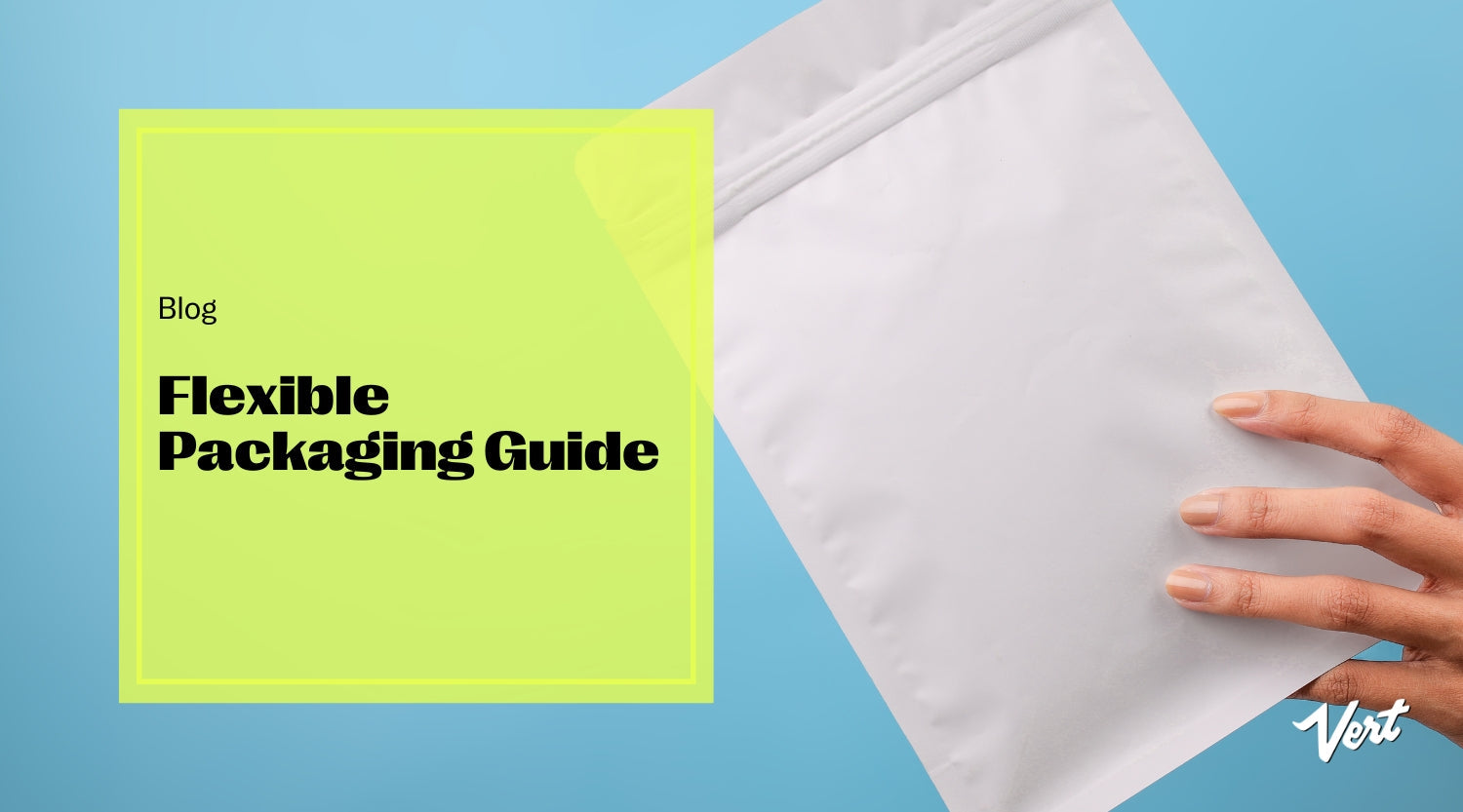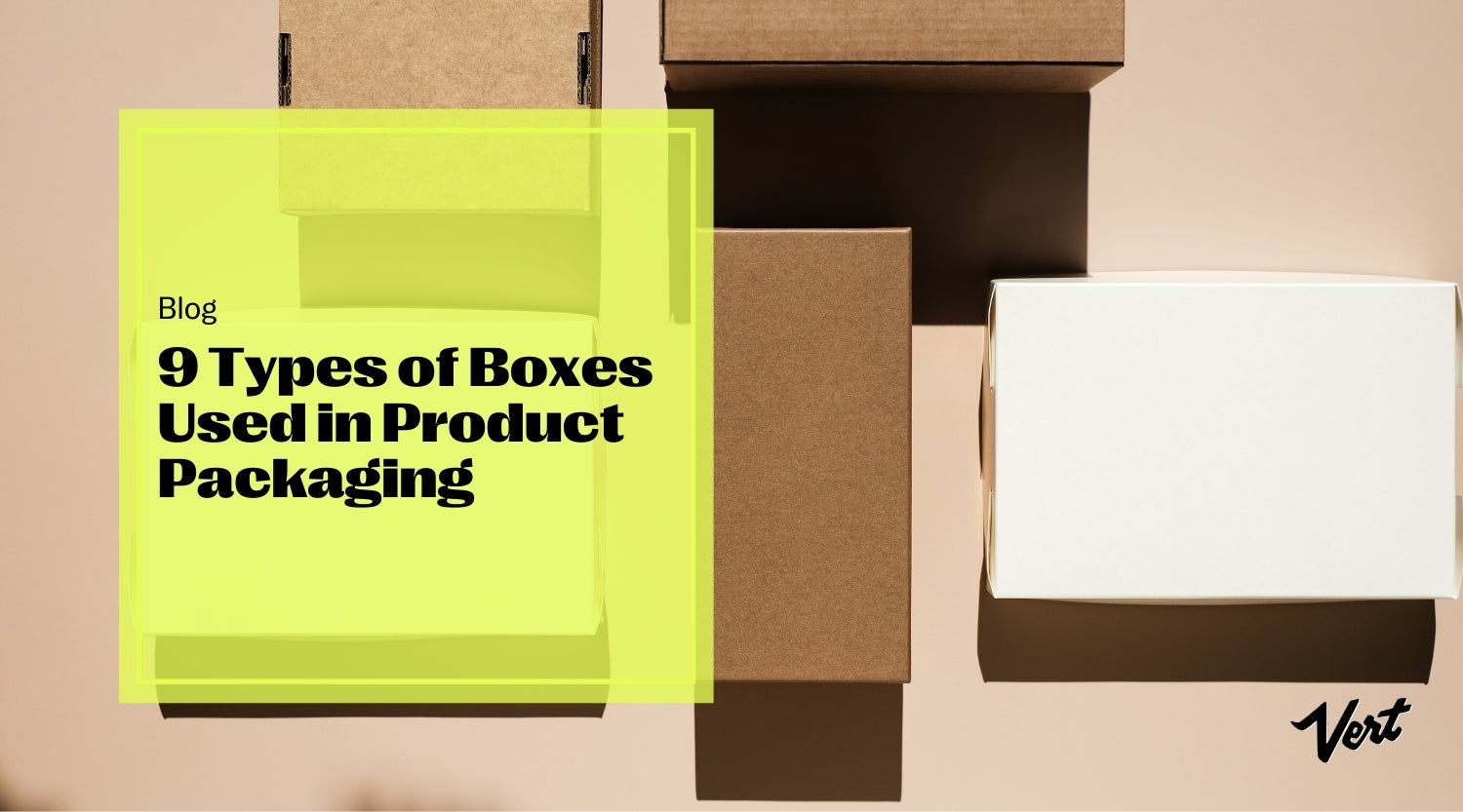Corrugated packaging is strong, versatile, and sustainable, which is why it’s one of the most ubiquitous packaging types around the world. It is used not only for shipping but also for primary and display boxes.
This material will undoubtedly form part of your supply chain at some point (or several). A strong understanding of its benefits, uses, and how it’s made will help you achieve packaging results that both you and your customers will love.
What Is Corrugated Packaging?
Corrugated packaging is made of corrugated cardboard. This is a material made up of a fluted layer between two sheets, providing a thick and spongy wall. Can you picture a box in which you've received a package in the post? That's corrugated material.

It is lightweight, inexpensive, very strong, and provides additional cushioning to the contents of packages. It is made using 52 percent recycled material on average and is recyclable itself! These factors make it the perfect packaging material for making custom boxes and shippers for consumable goods that you’ll distribute to retailers over and over again.
Corrugated vs Cardboard
Corrugated material is thick and spongy, whereas cardboard is thin and. Each can be made into various types of boxes, depending on need and suitability.
The word 'cardboard' usually refers to thick paper stock, the material from which cereal boxes and other carton boxes are made. This cardboard is thin, and lightweight. It provides sufficient structural support for durable goods, but is not suitable for fragile items or surviving shipment.

Corrugated packaging protects its contents through the fluting between the liner walls. There may be a single layer of fluting between an outside and inside liner, or there may be a second layer of fluting with an extra liner between the layers, as well as on the outside and inside.
This double-wall style provides even more cushioning to the product inside and is often used for large or heavy goods. Corrugated fiberboard also comes with different flute profiles, with the flute height generally ranging between 1.5 mm and 5 mm.
Benefits of Using Corrugated Packaging
Corrugated boxes are strong, durable, and provide extra cushioning to protect the product inside. This means less inventory loss due to damaged goods and a higher ROI. They are also lightweight, cost-effective, and shipped either flat or glued (whatever your need is) to make the process of packaging your goods easier.

How Corrugated Cardboard Is Made
Corrugated cardboard is made through a thoughtful process that is calibrated to get every step just right. The materials involved are flat liners (made using the long fibers from softwood trees), medium, which gets turned into the fluted layer (made using shorter fibers from hardwood trees), and a cornstarch adhesive.
Step 1. A single-facer machine combines a liner sheet and fluted medium to form a single-face board or corrugated board. Medium passes through the corrugating rolls under pressure and high heat to form flutes. Different corrugating rolls are used for each flute size.
Step 2. A pressure roll applies the correct amount of pressure and brings the liner into contact with the now fluted medium, after cornstarch adhesive is applied to the flute tips by the glue roll. Glue is applied in a specific amount and heated to a particular temperature to adhere to the liner in the strongest way possible. The fluted medium is now adhered to the liner, creating a single-face web.
Step 3. The single-face web is now fed to a double-glue unit. Simultaneously, roll stock (for the subsequent liner sheets) unwinds and passes through heat rolls to come up to the correct temperature necessary for the corrugating process. The single-face web threads through heated rolls and into the double-glue unit that applies the cornstarch-based adhesive to the flute tips and joins the single-face web to the outside liner.
If double-wall sheets are being made, two layers of single-face web are fed through the triple-stack rollers at this point and glued to each other, at the same time as the outside liner is being adhered in the double-glue unit.
Step 4. We now have single-wall or double-wall corrugated board. This board is fed through a double backer, which has heated plates above and below the board. The plates press on either side of the board, curing the adhesive bond. The belts then pull the board from the wet end of the corrugator to the dry end.
Step 5. At the dry end of the corrugator, the board is now scoured, slit, and cut to the requested specifications with a cut-off knife.
Step 6. The cut sheets are now fed to a new conveyor belt, where the sheets drop off the end and into a stack. This stack goes to operators who perform quality checks and prepare for strapping and shipment if not being processed further.
Step 7. The corrugated sheets are now turned into boxes with printed designs and branding. There are two main machines that complete this process: the rotary die cutter and the flexo process.
Rotary Die Cutter
The corrugated sheet stacks are fed through a flexo-graphic printing unit to have the requested designs and branding printed on the bottom of the sheet stock. They then pass to the rotary die cutters.
Rotary die cutters are custom-made for each box type that the factory produces (based on the dieline). These cutters are made of two half-cylinders, with metal blades and foam rubber sections that spit out the cut scrap pieces. These scraps are sent back to the paper mill to be used again in roll stock production.
The sheets now go through the scrubber, which removes any remaining cut-offs and smooths out any rough edges.
The printed and cut sheets travel on a conveyor belt to make a sheet stack, which the operator once again performs quality checks on and prepares for strapping and shipment.
Flexo Process
The flexo process starts much the same as the rotary die cutter process, but the flexo machine folds and glues the boxes upon completion of the printing and cutting stage.

The flexo machine prints onto the top side of the sheets, so the stacks are inverted before beginning the printing process. Then the same printing, cutting, and scrubbing processes take place.
The sheets go through vacuum-assisted belts and are folded in the proper sequence. The folded box is glued and joined as it exits the machine. The glue is given some time to cure before being bundled and subsequently strapped.
High-speed cameras operate throughout and monitor the placement and amount of glue applied to the boxes. These cameras are connected to a program that detects if a bad box is made, and sprays that box with UV light, as well as the bottom of the stack. The stacks are passed over a black light, which detects any UV light on the bottom of a stack and separates that stack for the operator to go over and remove the bad box.
Load tags are now put on each stack to identify each load for shipping.
Primary Uses of Corrugated
Corrugated fiberboard has multiple uses, from extra padding inside packaging to shipping boxes and store displays.
Single-Face Board
This material (which only has one liner and a layer of fluted material) is used inside packaging for extra cushioning, usually for larger products. Sometimes products need to be padded in a way that foam peanuts or bubble wrap just aren't right for, especially if you need a long layer of protection. Single-face board can also be used inside packaging as a divider or spacer, or to wrap individual items that are breakable.

Corrugated Shippers
These boxes are both functional and eye-catching, as they safely get your product from the factory to retailers while also sporting your unique designs and branding for the products inside. And even better, those glass jars of nut spread won't be broken in transit thanks to the superior structural integrity of these boxes, reducing inventory shrinkage due to product damage during shipment.

Display Stands
Have you seen a standing display in your local supermarket recently, the type that's about four feet high and shows off the new limited-edition protein bars or natural cosmetics? These displays are usually made of corrugated cardboard.
This material is perfect for the job, as it's shipped flat, which saves expense, is put together in store, and then can be disassembled for easy storage or recycling. These displays are strong but lightweight, making them easy to use and manage. They are also a good surface on which to place eye-catching branding or designs.

Corrugated Is a Packaging Must-Have
If your packaging needs to be strong and protective on the one hand, and lightweight and inexpensive on the other, corrugated cartons are your best friend and a winner for the environment, too! Not only can corrugated boxes be designed in custom shapes and sizes, but they can also be ordered with exactly the amount of fluted padding each product needs.
Consider corrugated for applications ranging from individual product boxes (for jars and tubes) to retail displays and shippers. Vert can add custom branding and finishes to any corrugated products after cutting and before they’re glued. You’ll ensure that your products arrive safely while sharing your brand identity at every stage of the journey from A to B.



Leave a comment
This site is protected by hCaptcha and the hCaptcha Privacy Policy and Terms of Service apply.